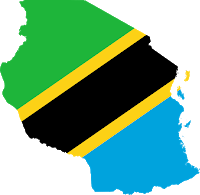EAST AFRICA: EAC Population Hits 142 Million
As world population hit the 7 billion mark this week, East Africa has reached 141.8 million people according to the World Population Report released in Kampala last week.
Of the five partner states, Tanzania leads with 46.2 million people, Kenya 41.6 million, Uganda 34.5 million, Rwanda 10.9 million and Burundi with 8.6 million.
The population of male to female is almost equal in all countries with an equal percentage of 50% in Uganda, Tanzania and Kenya.
Rwanda and Burundi has more females than males according to the report. Uganda has a bigger population growth rate at 3.2% followed by Tanzania at 3.1%, Rwanda 2.9%, Kenya 2.7% and Burundi at 1.9%.
Tanzania leads in the number of people living in urban centers at 26% followed by Kenya at 22%. Rwanda has about 19% of its people living in urban centres with Uganda and Burundi at 13% and 11% respectively.
Uganda leads in the total fertility rate per woman at 5.9 children per woman though the State of the Uganda Population Report released on the same day put it at 6.7 children per woman.
Comparing it the World Population Report, the fertility rate for women in Uganda is going down. Tanzania at 5.5 children per woman follows with Rwanda 5.3, Kenya 4.6 and Burundi 4.1.
The World Population Report also tackled life expectancy among the EAC partner states with Tanzania women at 60 years living longer than any other person in the EAC partner states.
The report reveals that Tanzania has the largest majority of its citizens poor among the partner states with 89% of its 46.2 million people living below $1.25 per day.
This is followed by Burundi with 81% of its 8.6 million populations living below $1.25 a day. Kenya has the least at 22% of its population living below $1.25 a day.
While launching the report in Kampala last week, Uganda’s finance minister Maria Kiwanuka noted that Uganda’s population is expected to reach 38 million in 2015, following a population growth rate of 3.2% per annum.
Uganda’s population has been growing rapidly over the last two and half decades. It grew from 16 million in 1991 to 24.2 million in 2002 and was estimated at 30.7 million in 2009.
However, Uganda’s population went up to 31.8 million in 2010 and 33.6 million in 2011.
By the close of this year, the global population will hit 7 billion. A world of 7 billion people has implications for sustainability, urbanization, access to health services and youth empowerment.
Many of the world’s social and economic problems are directly linked to population growth. Issues like poverty, hunger, child mortality, insufficient health care and diminishing natural resources are a result of too many people competing for limited resources.
Uganda’s rapid population growth is largely attributed to a high fertility rate. Uganda is ranked among countries with the highest fertility levels in the world.
Kiwanuka indicated that at the 3.2% rate a total of about 1.2 million people is added per year to Uganda’s population.
This has resulted in a young population as nearly half of the population in Uganda is under the age of 15, and the population will continue rising even if fertility declined.
The Uganda population report shows that 73.6% Ugandans are literate, they can read and write, while the percentage poverty levels of population with income under $1.25 per day is at 51.5%.
The Uganda report, though it contradicted with the World Population Report in most aspects, rated income inequality in Uganda at 45.7% and unemployment at 5%.
SOURCE: East African Business Week (Kampala)


